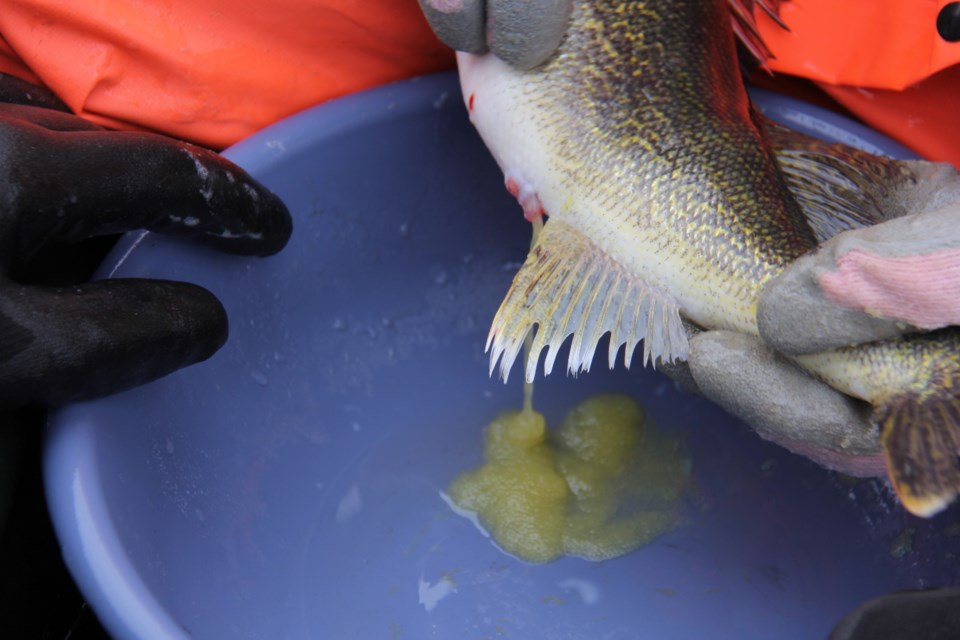A new report released this morning on the state of the walleye fishery in Lake Nipissing says restocking efforts should be supported and suggests another pair of studies be done.
It also calls for more transparency by way of a website calling the fishery "vital to the local economy and way of life of the surrounding communities. Several recognized factors are contributing to an unsustainable fishery, making local stakeholders, including First Nations communities, vulnerable both socially and economically."
While the study supports restocking, it does not recommend expansion.
"It is not recommended that the Lake Nipissing stocking efforts go beyond what is currently being done. Lake Nipissing does not possess the characteristics that would support a successful stocking effort. Supporting the abundant natural population of juvenile fish to spawning age provides the best chance of recovering the walleye population in the lake as a whole."
The Lake Nipissing study was commissioned by the North Bay & District Chamber of Commerce and funded by the Ontario Trillium Foundation. Dr. Doris Smith, a third-party consultant, undertook the report
Peter Chirico, President and CEO of the North Bay and District Chamber of Commerce said, “I don’t think we were too surprised with the results of the study by Dr. Smith, but it did provide a few opportunities that are promising for future sustainability.”
Four items stand out says the Chamber.
These items were:
a) potential for a new Lake Nipissing focused community website with open communication and transparency of annual monitoring, survey data, stock estimates and harvest estimates for all stakeholders and stewards of the lake to have access;
b) support the current restocking efforts;
c) support a third party to undertake a further study on stress levels of catch and release (winter vs summer) to determine if there are further opportunities;
d) support a third party to undertake a further study of the cormorant issue and/or invasive species.
Read the full report here.
The report also calls for more proactive efforts to stem the impact the human element is having on the lake.
"At a minimum, more active measures to control the human influences affecting water quality are necessary to help curb nutrient loading and limit cyanobacterial blooms."
It also suggests that a better understanding of the contribution of cormorant predation to total fish mortality is necessary to determine whether any measures should be taken to control these predatory birds.
And it defends native rights to fish commercially.
"This should be accepted and respected as a distinct part of the local fishery economy. The NFN community have made great strides as stewards of the lake and fishery, including bans on spring gill netting, spearfishing, and improvements to the enforcement of NFN Fisheries Law with the recent Memorandum of Understanding. However, efforts should be made to reduce bycatch in the commercial fishery by exploring alternative netting techniques. Also, onboard observer programs or short-term monitoring surveys should be in place on commercial fishing boats to clarify the situation regarding bycatch with the gill nets. This would help to increase the accuracy of stock assessments and improve harvest estimates."
Despite that, it appears NFN refused to co-operate in the study. No-one from NFN appears in the credits, and in the executive summary Smith states, "Notably absent from this report is a review of NFN commercial fishery data as well as input from NFN in regards to its commercial fishery and commercial fishing practices. Any recommendations or conclusions made herein were based on secondary sources of information."
Smith adds, "The NFN community is committed to achieving a sustainable fishery. However, current tensions pertaining to an individual’s Treaty protected right to fish, and community rights to impose harvest restrictions for the greater good of the fishery and the community, must be resolved in order to support overall recovery of the walleye fishery.
"Equally troublesome is the level of frustration and animosity among stakeholders, with tense and combative exchanges over the perceived failure by some to abide by harvest controls. Threats to livelihoods and Treaty protected fishing rights frequently boil over publicly into social media and elsewhere."



